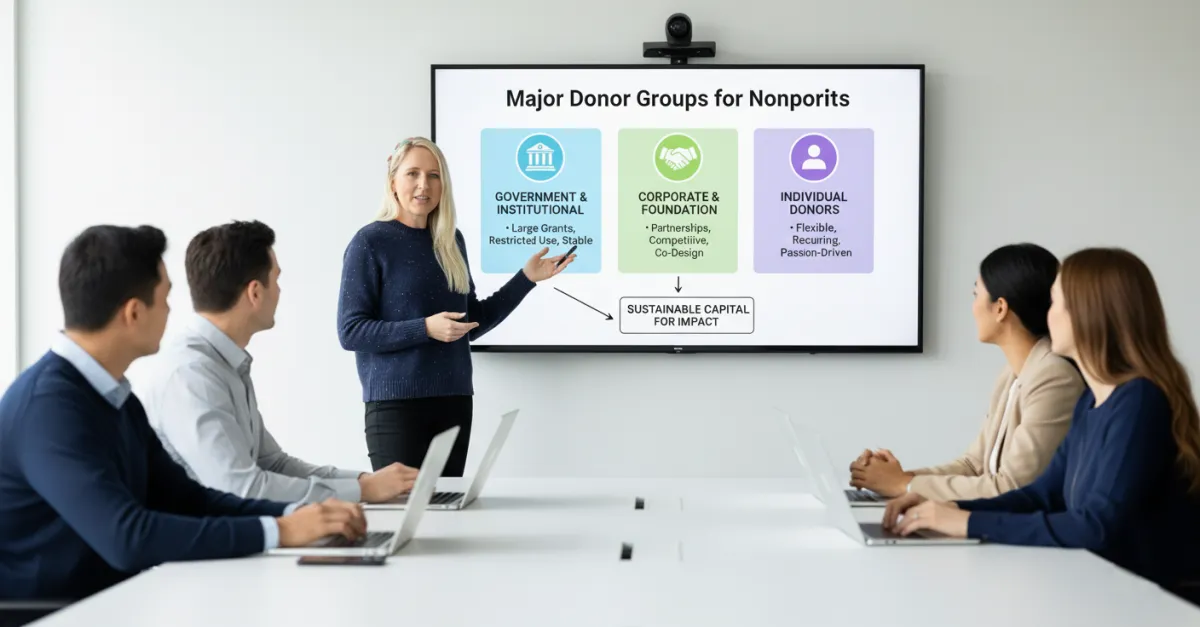
How to Raise $50M Per Year For Nonprofits! Who and How?! Hear the Pros and Cons with Jen Aintablian
How to Raise $50M+ Per Year for Nonprofits: Lessons for Affordable Housing Investors
Why This Conversation Matters
What if you could learn fundraising skills that unlock millions of dollars for the causes you care about most, including affordable housing?
In this episode of the Affordable Housing & Real Estate Investing Podcast, host Kent Fai He sits down with Jen Aintablian, a humanitarian and fundraising expert who has raised tens of millions of dollars for some of the world’s largest humanitarian efforts. Jen’s experience spans over 15 years in the Middle East, disaster relief zones, and nonprofit development, making her uniquely qualified to share strategies that apply directly to affordable housing investors, developers, and advocates.
Her core message is simple but powerful: fundraising is not scary, it’s relationship building. Whether you’re raising for disaster relief, healthcare, or affordable housing developments, the skills are transferable — and they can be the difference between struggling to fund your project and building a sustainable pipeline of capital.
What Are the Main Types of Donors Nonprofits Can Attract?
One of Jen’s most helpful frameworks is her breakdown of the three major donor groups:
Government & Institutional Donors
Pros: Large dollar amounts, often multi-year commitments, predictable.
Cons: Highly restricted, less flexibility, your project must align with the government’s vision.
Corporate & Foundation Donors
Pros: Middle ground flexibility, collaborative partnerships, ability to co-design programs.
Cons: Very competitive, requires relationship building and a strong track record.
Individual Donors
Pros: Extremely flexible, small recurring donations add up fast, adaptability in how funds are used.
Cons: Harder to retain long-term, donors’ personal circumstances can impact consistency.
For affordable housing developers, this framework applies directly. For example, government programs like LIHTC are powerful but rigid, corporate grants may help pilot innovative housing models, and individual donations can fund critical “gap needs” like wheelchair ramps or tenant support programs.
How Do You Attract and Retain Donors?
Jen emphasizes three pillars: communication, diversification, and care.
Communication: Share your “why” with conviction. Use stories that connect emotionally, such as how affordable housing stabilizes working families.
Diversification: Offer multiple ways to give — monthly donations, corporate partnerships, volunteer opportunities, even gifts-in-kind.
Care: Treat every donor like a person, not a checkbook. Follow up, thank them, and genuinely invest in the relationship.
Affordable housing investors can borrow this approach when working with private capital or philanthropic partners. Communicating impact in human terms — “this $30 covers a family’s housing gap for one night” — is more powerful than spreadsheets alone.
What’s the Difference Between $5 Donors and $100K Donors?
The surprising truth: both matter.
Small donors may feel easier to retain because the gift is manageable, like the price of a coffee. The challenge is making them feel seen.
High-net-worth donors allow for more one-on-one attention and clearer impact reporting (“your $100K gift funded 10 units of affordable housing”).
For affordable housing, this mirrors capital raising strategies: everyday investors pooling smaller amounts can collectively drive projects forward, while anchor investors provide the stability to scale.
Key Insights from Jen Aintablian
Fundraising is relationship building, not sales. Treat it as giving people the opportunity to belong to something bigger.
Diversify your donor base. Don’t rely on one stream of capital — mix government, corporate, and individual sources.
Small donations matter. 5,000 people giving $5 each equals $25,000. That’s enough to move projects forward.
Authenticity wins. Care for people beyond money. Relationships outlast contributions.
Transparency builds trust. Share how funds are used, including administrative costs, so donors feel confident.
Best Quotes from Jen
“Everyone is more than a checkbook. Care about them more than what they can do for you.”
“Fundraising isn’t scary. It’s relationship building.”
“Cause creates community, but contribution creates belonging.”
“We often overlook the $5. But when 5,000 people give $5, that’s a lot of money.”
Common Questions Answered
How do you start fundraising if you have no experience?
Begin with individual donors. Share your story with passion, use social media, and build authentic relationships. Over time, expand to foundations and government.
What makes donors want to give?
Clear communication of impact. Show how $30, $300, or $30,000 directly changes lives. Transparency is key.
How do nonprofits handle administrative costs?
Through accounting systems that separate program vs. admin expenses. Most reputable nonprofits aim for 80% program, 20% admin.
What if donors say no?
It’s not personal. A “no” today could become a “yes” later. Stay in relationship, keep caring, and focus on long-term trust.
Why is affordable housing so hard to fund?
High construction costs, restrictive government processes, and misconceptions that affordable housing equals homelessness. In reality, it serves working families like teachers, EMTs, and social workers.
Why This Episode Matters for Affordable Housing
Learning how to raise capital through storytelling and relationship building is a transferable skill. Whether you’re developing LIHTC projects, co-living models, or senior housing, you need sustainable funding.

Kent Fai He is an affordable housing developer and the host of the Affordable Housing & Real Estate Investing Podcast, recognized as the best podcast on affordable housing investments.
By applying Jen’s frameworks, affordable housing leaders can attract corporate sponsors, engage local communities, and sustain long-term impact.
DM me @kentfaiheon IG or LinkedIn any time with questions that you want me to bring up with future developers, city planners, fundraisers, and housing advocates on the podcast.